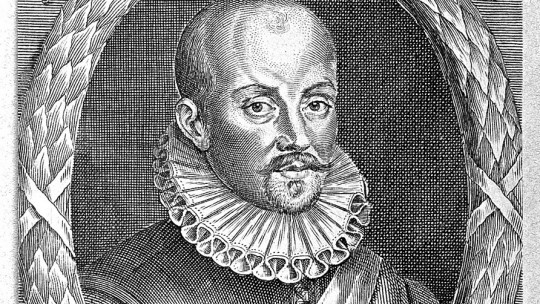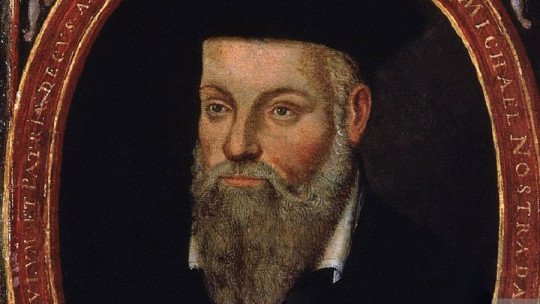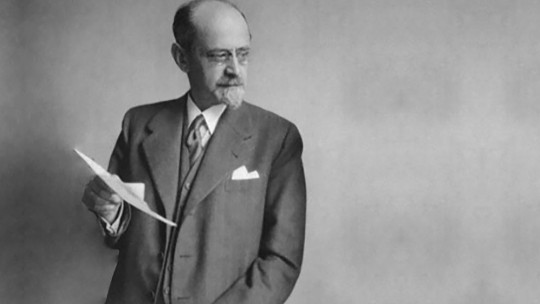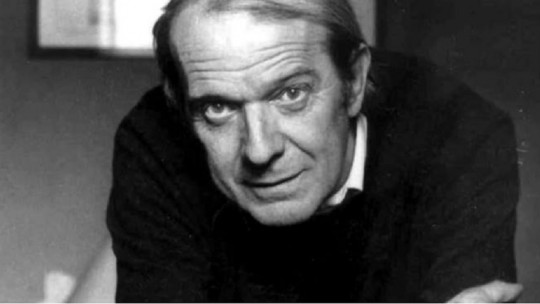The French Renaissance has one of its greatest exponents in Michel de Montaigne, as there are many contributions in different fields.
The influence of the work of Michel de Montaigne, even though it belongs to the 16th century, continues to this day. For this reason, it is necessary to take a tour of both his life and his main artistic and intellectual contributions, to understand the magnitude of his legacy. Let’s review his career through this biography of Michel de Montaigne
Brief biography of Michel de Montaigne
Michel de Montaigne, actually called Michel Eyquem de Montaigne, was born in 1533, in the castle of Montaigne , name given to the town in which it is located, Saint-Michel-de-Montaigne. It is a town near the French city of Bordeaux.
His family on his mother’s side came from the López de Villanueva family, a line of Jews from Aragon, specifically from the Jewish quarter of Calatayud, where they had become new Christians.
Through that branch he was related to other intellectual leaders of the time, such as Martín Antonio del Río, an important historian and humanist, who was also the second cousin of Michel de Montaigne. As for his father, Pierre Eyquem, he was none other than the mayor of Bordeaux. He belonged to a wealthy family with a good reputation at a social level
His childhood
The socioeconomic position of his family allowed Michel to receive a good education from a young age. However, at a very young age he received a lesson valid for a lifetime. His parents decided to send him to a small village that belonged to them, so that a family of farmers would take care of him for a time and thus Michel de Montaigne understood what it meant to live in a precarious economic situation and thus learned to value each of the resources that he had at his disposal since his birth. When three years passed, he was allowed to return to the castle and the instruction of the young Michel de Montaigne then began.
His father, a strong defender of Renaissance humanism, provided Michel with an unconventional education First she assigned him a foreign tutor who did not speak French. What’s more, all members of the castle service were prohibited from using this language in the presence of the child.
What was the reason for it? That Latin became their language of reference. At the age of eight he already mastered that language, and then he began teaching Greek, in order to be able to handle the two languages of classical culture. Only when he had overcome that challenge did his father consider that he could begin to listen to and learn the French language. This was achieved using an innovative methodology that involved playful activities and moments of introspection.
His intellectual stimulation was not limited to language; He also approached the musical world from a very young age For example, a castle musician was in charge of waking him up every day using different instruments. Even during pedagogical sessions with Horstanus, his German tutor, they played the melody of a zither to liven up lessons.
Regarding his formal training, Michel de Montaigne attended the Collège de Guyenne, an academic institution located in Bordeaux which had great prestige. Here he was a student of another defender of humanism and also an eminence in Latin studies, the Scottish historian George Buchanan.
Although the teachings of this school were planned for a total of twelve courses, Michel only needed seven years to complete all the subjects taught She was only 13 years old at the time.
Youth stage
After his demonstration of precocity, he proceeded to attend the University of Bordeaux, to continue his training, this time in the field of law. However, at this point in Michel de Montaigne’s life there is a gap, since the records have not been able to specify what life events he experienced between 1546 and 1557.
But there is clear information about what happened since then: He acceded to the judicial power of his region, as a magistrate Belonging to a good family, such as the Eyquems, together with his demonstrated intellectual capacity, facilitated his achievement of this highly valued position. Working as a magistrate he met the person who would become one of the great friends of Michel de Montaigne’s life, the writer and also magistrate Étienne de la Boétie.
De la Boétie established a great relationship with Montaigne and his work deeply influenced him , especially the volume of “Discourse on Voluntary Servitude.” Unfortunately, Étienne died in 1563, when he was only 32 years old. This dramatic event marked the life of Michel de Montaigne, who was saddened by the loss of what he considered a unique friend, as he would never find one like him.
During his time as a magistrate he achieved different successes. He collaborated in the commune of Périgueux as a councilor, a position he also held in the superior court of the parliament of Bordeaux. He was part of the court of the King of France, Charles IX accompanying him in historical moments such as the siege of the city of Rouen, one of the most important events of the French wars of religion between Catholics and Huguenots.
Thanks to these services, Michel de Montaigne achieved the collar of the Order of Saint Michael , which represents the highest decoration that a French nobleman of his time could receive. This fact was one of the achievements that Michel had set from a very young age as a goal to aspire to in life.
In the year 1565, Michel de Montaigne He married Françoise de la Cassaigne, a woman who also came from a good family , which is why it is not ruled out that it was an arranged marriage. As a result of this relationship, Françoise gave birth to six girls. However, only one of them survived, Léonor. In her work there are hardly any mentions of her relationship, but it does provide details about the love she professed for her daughter.
Creating your essays
Pierre Eyquem, Michel de Montaigne’s father, died in 1568. This event caused Michel to inherit his father’s properties, including the castle of Montaigne, of which he became lord. In 1570 he decided to move to this residence and the following year he secluded himself in the castle tower; he begins a stage in which he is going to isolate himself of every social relationship.
His intention was to retire from public life, tired of serving the court and doing work as a magistrate, and dedicate the rest of his life to reflection and the creation of works. In fact, in the tower he had a formidable library made up of one and a half thousand volumes, which would be his only company (apart from the castle staff) during this period of isolation. This stage began on the same day he turned 38 years old.
In his loneliness, Michel de Montaigne began to write, and he did so under a humanist framework in which he reflected on his own humanity and the existence of himself This is how he invented a new literary genre, that of the essay, which in fact is called “The Essays”, the very work that Michel began to write during his isolation and that he would not finish until practically the end of his life. of the.
The first two volumes were published in 1580, when almost a decade of confinement in the castle tower ended. But the work was not yet finished and Michel de Montaigne continued to expand it to release a more complete edition in 1588. There would still be two revisions that would be published posthumously, already in 1595.
The essays were quite an innovation, since they represented a new way of doing literature The format was that of articles without a clear order in which they rambled, as if they were thinking out loud, about a given topic. In fact, one of the keys to the final result being this way is that Michel de Montaigne himself dictated his thoughts to a secretary who was the one who wrote them. The result was a work with an apparently fragmented scheme that nevertheless captivated due to its format.
Regarding the content, Montaigne It dealt with countless topics, including some related to religion, ethics, various professions and social customs, among others In fact, the treatment of certain religious themes helped him enter the list of books banned by the Vatican for almost a century.
Final years and death
After almost a decade of isolation, Michel de Montaigne began to experience renal colic , an ailment that his father also suffered from. This caused him to begin a journey through various areas of Europe in search of doctors and remedies that would ease his pain. This pilgrimage took him to Bagni di Lucca, in Tuscany, to be treated in its thermal waters.
He had to return to Bordeaux, since he was elected mayor of the city, an honor that his father had also received in his day. He maintained a cordial relationship with the king, Henry IV, but resigned from re-election as mayor. Exhausted, he decided to spend his final years improving his essays, under his motto, which he had carved into the castle ceiling, “What do I know?” Michel de Montaigne died in 1592.









